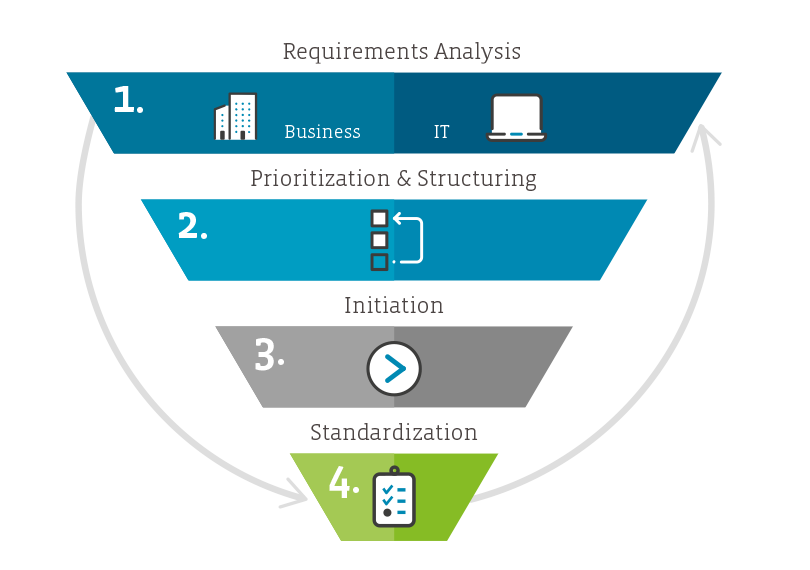Derived from the IT project portfolio, projects are set up professionally and quickly. Basics, such as the creation of a timeline or the implementation of kick-offs, must become a matter of course. Similarly, continuous operational support until the project is completed is also unavoidable. Other essential items include transparent communication and the preparation of reports, possibly required escalations, on-going monitoring of possible risks and costs vis-a-vis all interfaces. Moreover, all stakeholders must be informed of the status of the projects on a regular basis.
A project manager with the relevant IT project experience is the key player in this step. He must have the methodological expertise for managing IT projects, and he must manage the project from initiation to completion – the methodological expertise. The successful methodological implementation of a project requires the following (in addition to planning and organization): the objectives and tasks must be clearly defined and demarcated for all participants during the entire project. Even more important is content management – the technical expertise. An important key feature that creates acceptance in the project team. Together with these two skills and an understanding of the business requirements, the project manager is in a position to make decisions, manage escalations at all levels and successfully manage the project.
Or to put it more simply: the successful implementation of IT projects requires project managers who have these skills and who include both perspectives (IT and Business).



